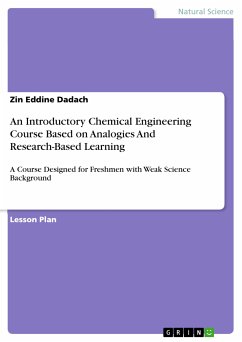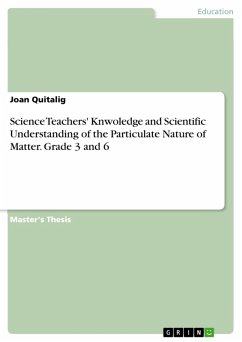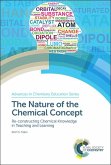Lesson Plan from the year 2016 in the subject Didactics - Chemistry, , course: Introduction to Chemical Engineering, language: English, abstract: This course serves as an introduction to concepts used in the analysis of chemical engineering problems. Based on analogies and research-based learning, it is intended to provide freshmen a global overview of the field of chemical engineering and help them visualize the elementary principles of Transport phenomena, Thermodynamics, Energy conservation and Energy efficiency. The Learning outcomes of the course are related to the following chapters: (1) Electricity, (2) Fluid Dynamics, (3) Heat Transfer, (4) Mass Transfer & Solubility, (5) Thermodynamics, (6) Energy efficiency. For every chapter, the teaching strategy followed the three main steps: (a) a basic introduction of the theory, (b) similitude with the selected Analogy, (d) research-based learning: lab experiments or class activities and (e) a conclusion. The main goal of this paper is to show that the use of analogies can be a very helpful tool in order to build a strong engineering foundation for freshmen who lack high school scientific background. To help students shift from the imaginary of the five analogies utilized in the course to the real pictures of some engineering concepts, the similarity to the analogy is followed by a simple lab experiment or a class activity. The final chapter of this course is related to energy efficiency to explain to freshmen who lack scientific background that their attitude could make them more efficient and lead them to success.
Dieser Download kann aus rechtlichen Gründen nur mit Rechnungsadresse in A, B, BG, CY, CZ, D, DK, EW, E, FIN, F, GR, HR, H, IRL, I, LT, L, LR, M, NL, PL, P, R, S, SLO, SK ausgeliefert werden.









